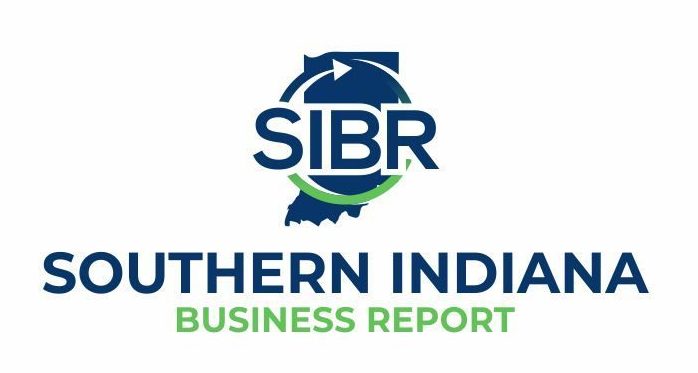Carol Johnson, Southern Indiana Business Report
The sound and smell of smash burgers sizzling on the griddle left no doubt there’s something new on the menu for students at Brown County Jr.-Sr. High School.
Farther south, the hamburgers, pulled pork, taco meat and sausage patties being served in the Southeast Dubois cafeterias are from nearby Fischer Farms and are part of a USDA Farm to School program that aims to get more locally and regionally produced food served in school cafeterias.
Fischer Farms, a 750-acre farm in St. Anthony, sells its meat to restaurants and grocery retailers across Indiana, Illinois and Ohio. Its beef and pork are served at Indiana University residence halls. But until two years ago, it had never worked with K-12 schools.
Over the past several years, there’s been an effort to get more nutritious, locally produced foods in school cafeterias.
There was a time when school lunches were prepared daily from scratch by a kitchen staff. As rules and nutrition guidelines for schools receiving public funds changed, schools switched to purchasing more frozen, pre-cooked foods that are reheated by kitchen staff. Today, most school districts work with a distributor and many contract with a third-party vendor to manage their food service.
The result of those changes meant that even though a school like Southeast Dubois had a large, sustainably-minded beef producer located nearby, its food was sourced elsewhere.
“For public schools, it’s been a huge unknown on how to bring in local foods,” said Heather Tallman, Fischer Farms marketing director.
The Local Food for Schools Cooperative Agreement Program (LFS) has made it easier for school districts to source their food from local farmers. The Indiana Department of Health administers the program for Indiana schools. The IDH purchases and distributes local and regional foods and beverages for schools to serve children through the National School Lunch and School Breakfast Programs. The goal is to improve child nutrition and build new relationships between schools and local farmers.
Now the program is in jeopardy. The USDA is cutting over $1 billion in funds going to grant programs that helped local food banks and schools get fresh food. The cuts will impact 450 Indiana schools that were receiving fresh locally produced food from farmers.
More than 450 Indiana schools across 125 school districts were participating in the Local Food for Schools Cooperative Agreement program or LFS, which enables schools to buy locally grown food from regional farmers. The agreements already underway will remain in effect until July 31, according to the Indiana Department of Health.
More lunch participation
Fischer Farms began selling its meats to schools in Indiana about two years ago, through either direct purchases by a school corporation’s food service director or from schools participating in the USDA Local Food for Schools program.
Since then, more than 40 school districts have become a Fischer Farms customer.
Tallman said the result has been higher participation rates for lunches consumed and that means happier, satisfied students.
Because Fischer Farms can customize an order, school cafeteria staff can get creative.
“We’re seeing all kinds of innovation,” Tallman said. “At Brown County, they are serving Jamaican jerk pork loin, Cuban sandwiches and a lot of standards like smash burgers that kids love.”
Tallman said on a day when the school cafeteria served smash burgers made from Fischer Farms beef, the cafeteria served 200 burgers.
“They told us they usually serve 20 when they use frozen patties,” she said. “The staff was so incredibly excited.”
Southeast Dubois, because of its close proximity to Fischer Farms, has been special for the team at Fischer Farms, said Tallman. They have created a farm to school program, which includes direct farm purchases of foods along with educational messaging they have shared corporation wide that has been led by students – called The Ranger Report.
“One of the schools is next door to the farm,” Tallman said. “It’s pretty exciting for the Fischers to know that their employees and their kids go to these schools, so they feel very invested in their success.”
“Our Farm to School initiative is dedicated to providing students with fresh, high-quality, locally sourced meals, and our partnership with Fischer Farms has been instrumental in making this a reality,” said Lisa Fletcher, Food Service director for Southeast Dubois County School Corporation. “Students have given positive feedback on the taste and quality of the meats, and we are thrilled to see them enjoying nutritious meals that support their health and well-being.”
Fletcher said being able to have a Fischer Farms chef work with cafeteria staff to guide the staff as they transition to preparing fresh, locally raised products was an invaluable resource.
“Fischer Farms’ commitment to sustainability and food quality has had a meaningful impact on our school community,” Fletcher said.
In the Radius Indiana region, North Daviess, Loogootee, and Barr-Reeve are some of the other schools that partner with Fischer Farms. Some schools buy directly from Fischer Farms, others use the LFS funds and some do a combination of direct buying and using LFS funds.
In the beginning, schools had a lot of questions about Local Food for Schools and if it could work for them.
“We had a lot of meetings in school kitchens,” Tallman said. “That’s how this has grown.”
One of the challenges when buying from local farmers, Tallman said, was that schools were accustomed to pre-cooked and frozen items.
“That’s not the model of farms, so we had to educate schools that a burger doesn’t have to come frozen,” she said.
Part of the education is the product itself. Fischer Farms doesn’t add fillers, preservatives, sodium of sugar to their meats, putting their products in line with new school nutrition guidelines to reduce sugar and sodium.
How often schools serve Fischer Farms meat can vary from once a month to weekly. To assist kitchen staff, Fischer Farms has sent a professional chef to the school to educate staff about Fischer Farms products.
“The food service director has to really want it and the school administration has to be on board with changing some polity and procedures,” Tallman said.




